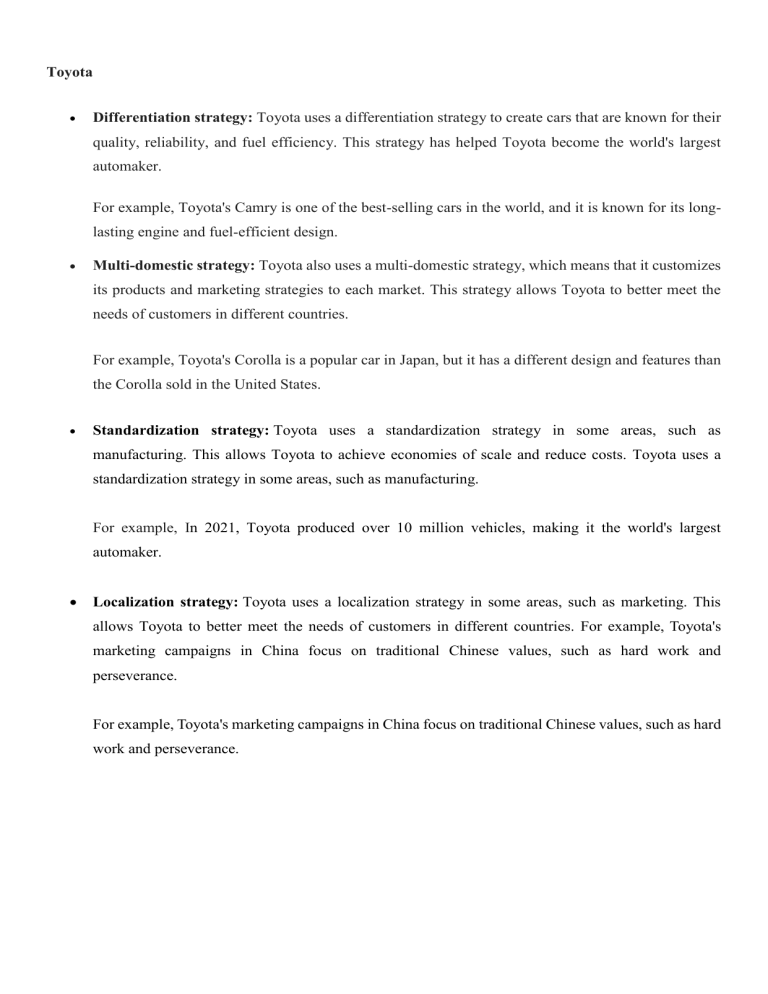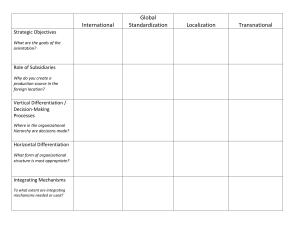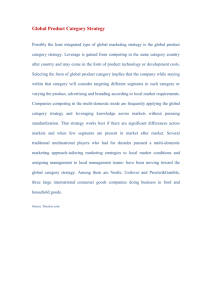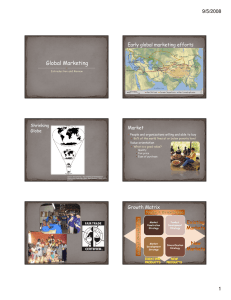Business Strategy: Toyota, Samsung, Apple, Nike, Nestle, Google, Unilever
advertisement

Toyota Differentiation strategy: Toyota uses a differentiation strategy to create cars that are known for their quality, reliability, and fuel efficiency. This strategy has helped Toyota become the world's largest automaker. For example, Toyota's Camry is one of the best-selling cars in the world, and it is known for its longlasting engine and fuel-efficient design. Multi-domestic strategy: Toyota also uses a multi-domestic strategy, which means that it customizes its products and marketing strategies to each market. This strategy allows Toyota to better meet the needs of customers in different countries. For example, Toyota's Corolla is a popular car in Japan, but it has a different design and features than the Corolla sold in the United States. Standardization strategy: Toyota uses a standardization strategy in some areas, such as manufacturing. This allows Toyota to achieve economies of scale and reduce costs. Toyota uses a standardization strategy in some areas, such as manufacturing. For example, In 2021, Toyota produced over 10 million vehicles, making it the world's largest automaker. Localization strategy: Toyota uses a localization strategy in some areas, such as marketing. This allows Toyota to better meet the needs of customers in different countries. For example, Toyota's marketing campaigns in China focus on traditional Chinese values, such as hard work and perseverance. For example, Toyota's marketing campaigns in China focus on traditional Chinese values, such as hard work and perseverance. Samsung Standardization strategy: Samsung uses a standardization strategy to create products that are sold around the world with few modifications. This strategy allows Samsung to achieve economies of scale and reduce costs. For example, Samsung's Galaxy smartphones are sold in over 100 countries, and they all have the same basic features. Localization strategy: Samsung also uses a localization strategy in some markets, such as China. This means that Samsung customizes its products and marketing strategies to better meet the needs of Chinese consumers. For example, Samsung's Galaxy smartphones in China come with pre-installed apps that are popular in China. Differentiation strategy: Samsung also uses a differentiation strategy in some areas, such as its highend smartphones. This allows Samsung to charge a premium price for its products. For example, the Samsung Galaxy S22 Ultra is one of the most expensive smartphones on the market. Multi-domestic strategy: Samsung uses a multi-domestic strategy in some areas, such as its television business. For example, Samsung has different television brands for different markets. Apple Differentiation strategy: Apple differentiates its products by focusing on design, user experience, and brand image. For example, the iPhone is known for its sleek design and intuitive interface. Standardization strategy: Apple uses a standardization strategy in some areas, such as its software. This allows Apple to provide a consistent experience to users around the world. For example, The iOS operating system is the same on all Apple devices, regardless of the country or region. Localization strategy: Apple uses a localization strategy in some areas, such as its marketing. This allows Apple to better connect with customers in different countries. For example, Apple's marketing campaigns in China are tailored to Chinese culture and values. Nike Localization strategy: Nike uses a localization strategy to market its products around the world. This means that Nike tailors its marketing campaigns to specific cultures and demographics. For example, Nike's marketing campaigns in China focus on traditional Chinese values, such as hard work and perseverance. Differentiation strategy: Nike also uses a differentiation strategy to some extent. This is because Nike wants to be seen as a premium brand. For example, Nike's Air Jordan sneakers are some of the most expensive sneakers in the world. Nestle Multi-domestic strategy: Nestle uses a multi-domestic strategy to operate in different countries. This means that Nestle tailors its products and marketing strategies to each market. For example, Nestle's Nescafe coffee is sold in over 180 countries, but it has different flavors and packaging in each country. Standardization strategy: Nestle uses a standardization strategy in some areas, such as its manufacturing. This allows Nestle to achieve economies of scale and reduce costs. Differentiation strategy: Nestle also uses a differentiation strategy in some areas, such as its marketing. This allows Nestle to better connect with customers in different countries. For example, Nestle's marketing campaigns for its infant formula products are tailored to the specific needs of mothers in different countries. Localization strategy: Nestle uses a localization strategy in some areas, such as its packaging. This allows Nestle to better meet the cultural expectations of customers in different countries. For example, Nestle's packaging for its KitKat candy bars is different in different countries. Google Standardization strategy: Google uses a standardization strategy to develop its products and services. This means that Google's products and services are the same around the world. For example, Google Search is the same in every country, regardless of the language or culture. Differentiation strategy: Google also uses a differentiation strategy to some extent. This is because Google wants to be seen as a leader in innovation. For example, Google Search is the same in every country, regardless of the language or culture. Unilever Differentiation strategy: Unilever differentiates its products by focusing on quality, innovation, and brand image. For example, Dove soap is known for its moisturizing properties, while Axe body spray is known for its masculine scent. Multi-domestic strategy: Unilever uses a multi-domestic strategy to operate in different countries. This means that Unilever tailors its products and marketing strategies to each market. For example, Unilever's shampoo brands in India are different from its shampoo brands in the United States. Standardization strategy: Unilever uses a standardization strategy in some areas, such as its manufacturing. This allows Unilever to achieve economies of scale and reduce costs. For example, Unilever's factories in different countries use the same production processes. Localization strategy: Unilever uses a localization strategy in some areas, such as its marketing. This allows Unilever to better understand and connect with customers in different countries. For example, Unilever's marketing campaigns in China are tailored to Chinese culture and values.



